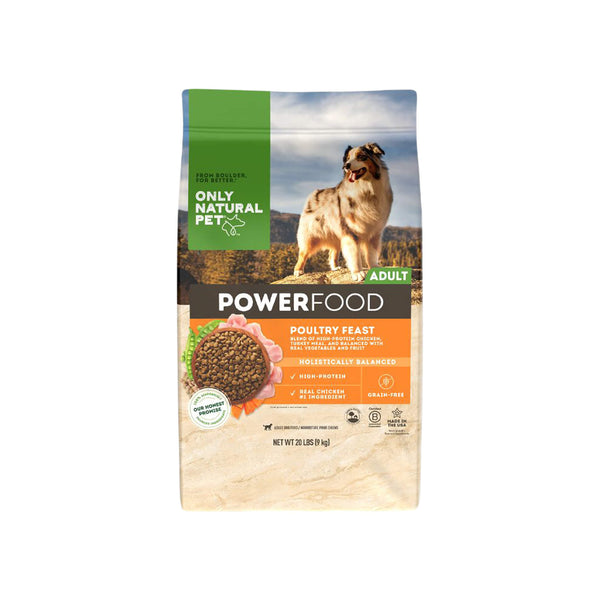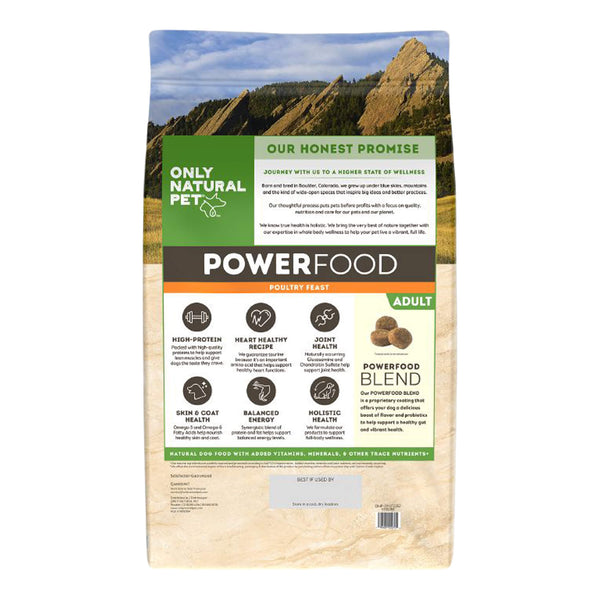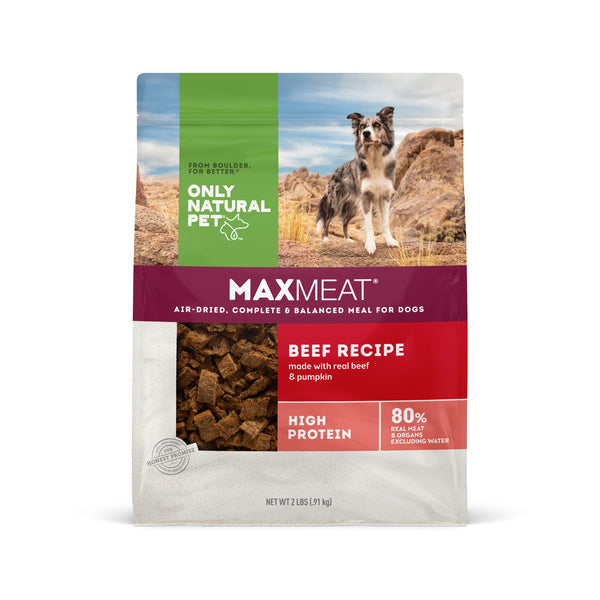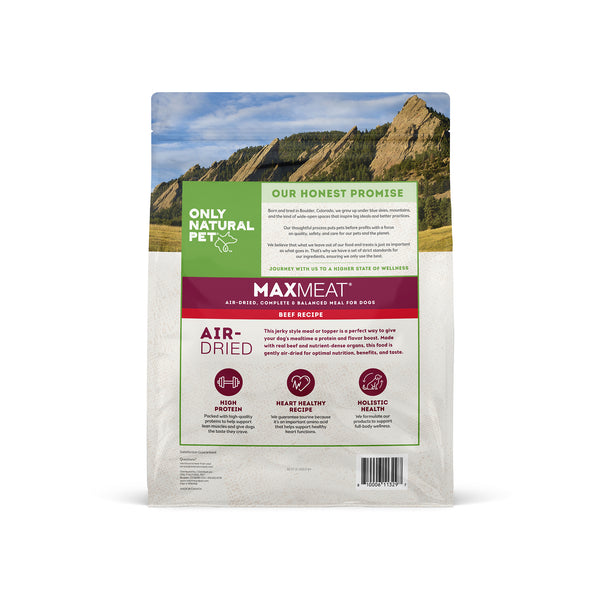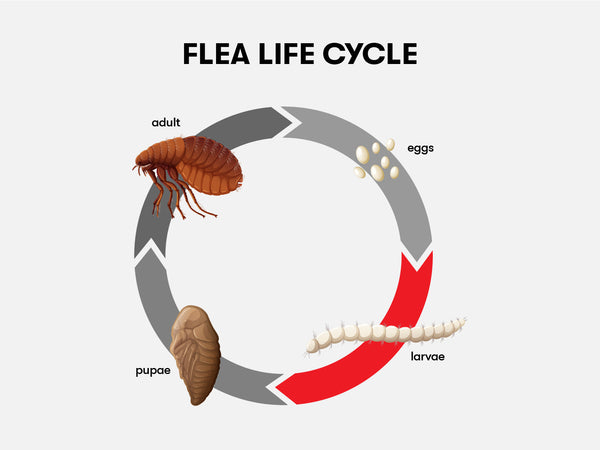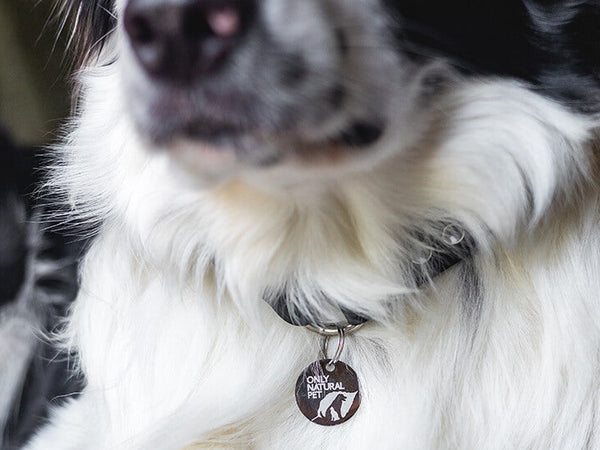The Role of Protein in Pet Food
Written by: Dr. Jean Hofve, Holistic Veterinarian, DVM
Choosing the Right Protein
Protein is arguably the most important component of your dog's or cat's diet, and it is often the most hotly debated aspect of pet foods. What is the best source of protein for your pet? How much protein should be in the diet and can you feed too much of it? How can you tell which foods have better protein sources? What about pets with food allergies? It's a lot to ponder and leaves many pet parents confused about which of the seemingly endless variety of pet foods they should feed their companion.
The rapid growth of the natural pet foods market has significantly expanded the viable feeding options for responsible pet parents, but having more choices does not generally make a decision easier. On the contrary, the more options available, the more difficult the choice becomes. In this article, we will help make that decision a little easier for you by discussing one of the key factors influencing pet food evaluation: proteins.
"Protein is arguably the most important component of your dog's or cat's diet, and it is often the most hotly debated aspect of pet foods."
Evaluating Protein Sources
A protein molecule is made up of chains of amino acids. Different sources of protein contain different combinations of the 22 or so amino acids. Of these amino acids, 10 are considered "essential" amino acids, because dogs and cats cannot make them on their own, these particular amino acids must be present in the diet. (Taurine is being debated right now. It's essential for cats, but becoming essential for some dog breeds as well.)
When a dog or cat consumes protein, it gets broken down during the digestive process into its individual amino acids. Those amino acids are then reassembled into the building blocks of body tissues such as skin, hair, muscles, and organs. Amino acids are also utilized to produce metabolic enzymes that are necessary for many bodily functions including the regulation of antibodies within the immune system and the transfer of nerve impulses.
Protein from animal sources contains the most complete and most easily digested and assimilated amino acids for dogs and cats. Animal proteins are not only more bio-available and contain a wider array of amino acids, both essential and non-essential, they are also more palatable for you companion.
The biological value of a protein is determined by how readily the amino acids broken down and used by the body. For dogs and cats, egg whites are at the top of the list with a biological value of 100, followed by muscle meat (beef, chicken, lamb) at 92, and organ meats at 90. Wheat and corn are way down the list with biological values of 60 and 54. Cooking meat at the high temperatures required for wet foods and kibble reduces its biological value, providing another reason to include raw or less processed foods in your companion's diet.
When evaluating the protein source on a bag of kibble, keep in mind that whole meats, such as an ingredient listed as "chicken" or "beef," contain 75% water. So if a whole meat is listed first, the next ingredient should be a specific meat meal to insure the protein in the food is from animal sources, not grains (i.e., chicken meal or beef meal, not generic "meat meal" or by-product meals).
If the ingredient lists "chicken" first followed by grains or grain by-products, you can be sure that much of the protein in the food comes from the grains and is less bio-available to your pet. Trying to force carnivores to derive their amino acid requirements from grain sources is one of the main contributors to the pet obesity epidemic facing our dogs and cats today.
Which Meat is Best?
The Best Protein for Dogs
Is beef best for dogs, or is lamb better? Is chicken or fish better? While there are strong opinions among pet enthusiasts about the answers to those questions, the real answer is it completely depends on your individual dog.
Some research, specifically that of William Cusick, suggests that dogs do better on a diet and protein source that most closely matches that of their ancestors: the food that was available in the region in which the breed developed. For example: Border Collies would eat lamb, fish and poultry as they originated in Scotland where these were staples in the diet. The Greyhound, originating in Egypt, would eat rabbit, pork, poultry and goat. German Shepherds would be fed beef, as they were originally bred in the Alsation Region of Germany.
While breed specific guidelines may be helpful for some dogs, for many dogs their heritage is quite unknown. For another large group of dogs, food allergies will determine which protein sources are best, (see Novel Proteins below).
The Best Protein for Cats
Cats on the other hand, are assumed to have all developed on a similar diet of rodents, specifically mice, birds and the occasional rabbit. So which meat is best? In the absence of food sensitivities or allergies, the answer is "at least three different ones." Rotation insures a broader nutritional base over time and helps reduce the incidence of food sensitivities and allergies.
Many cats fed the same food for years on end will develop signs of intolerance such as itchy skin or paws, or chronic digestive problems such as gas, loose stools or frequent vomiting. Rotating between at least three or four different foods with different protein sources, and preferably from a variety of manufactures, provides the ideal diet.
Only you and your companion can really determine what is best by trying various high-quality foods and choosing those that your dog or cat thrives on.
How Much is Too Much Protein?
With the growing popularity of grain-free and low carbohydrate foods in recent years, we hear more questions from pet parents concerned about feeding too much protein. One reason for this question is the lingering myth that too much protein in the diet can cause kidney disease, especially in older animals. Nutritional research has disproved this falsehood, but still it lives on.
This myth originated when veterinarians began to put animals with kidney disease on low-protein diets to minimize nitrogen levels. Today, holistic veterinarians, and increasingly even traditional veterinarians, are suggesting a diet for animals with kidney disease containing higher quality protein that is more digestible rather than low-protein foods. The better quality the protein, the less waste produced through digestion creating less work for the kidneys and lower nitrogen levels in the body.
Excess protein in a healthy dog or cat's diet would typically be either excreted in the urine, used as energy, or converted to fat. The one precaution when feeding a higher protein food is watching how much you feed so as not to allow your pet to gain weight. So the answer to "How much protein is too much?" is dependent on your individual cat or dog, their metabolism, activity level and lifestyle.
If your feline friend spends most of the day on the window sill and rarely plays, feed them less of the same food you feed a high energy cat who chases anything that moves and runs up and down the stairs a dozen times a day. They both can thrive on a high-quality, high-protein diet, they just require different quantities of the food.
Growing puppies and kittens, as well as pregnant or nursing mothers and working animals require more protein than normal adult animals. Most of the premium pet foods provide adequate fat and protein levels for their needs, provided they are fed larger portions for their size. Adding fresh meat or grain-free wet foods to some meals is a good way to provide extra protein.
Novel Proteins for Allergies
Protein Allergies
When food allergies are suspected, a dog or cat is often put on a diet consisting of a "novel" protein and carbohydrate. A novel protein is simply one that your dog or cat has never been exposed to. Lamb and rice foods were originally formulated to meet this need. The idea became so popular, however, and so many manufactures jumped on the lamb and rice bandwagon that most dogs and many cats have eaten lamb at some point in their life.
Pet food companies, seeing the growing market for such unique foods, continue to produce "allergy formula" foods with ever more exotic sources of protein. Venison, duck, rabbit, herring, and even kangaroo can be found among the formulations available for food-sensitive dogs and cats. This makes providing variety in the diet a little easier. But be careful not to feed every protein available or you may run out of options should the need ever arise to put your companion on a restricted, novel protein diet.
When searching for a novel protein food for your companion, read labels carefully. Many canned foods and kibble will bear a name suggesting a novel protein, but upon reading the ingredients you may find another protein listed such as eggs or chicken. Look for food specifically designed for sensitive pets. If you're struggling to find a viable premade food, many pets have success with dehydrated pre-mixes and novel protein from the grocery store for a homemade diet. Of course, some ingredients in the pre-mixes may contribute to allergies as well, such as alfalfa or some grains. If a true novel diet is required, cooking sweet potatoes or rice to combine with a novel protein may be safer.
To truly determine if the restricted diet is helping you may need to keep your dog or cat on this single protein diet for up to 12 weeks, however, progress is sometimes seen within 4 to 8 weeks. Once a food tolerance is established, find at least one, and preferably two, other protein sources that can also be tolerated for rotational feeding. A dog or cat that has developed an allergy to one protein is more susceptible to developing additional sensitivities, so rotation in their diet is important.
When feeding a restricted diet to a food-sensitive pet, don't forget to read the labels on treats, too.
Grain Allergies
Some dogs and many cats may have grain allergies rather than, or in addition to, protein allergies. The increase in the availability of grain-free foods makes feeding these individuals much less problematic than it was a few years ago. The downside to the influx of grain-free foods seems to be the trend to include combinations of more uncommon or exotic meats in these formulas including buffalo, venison, duck and salmon in combinations with each other or with more common meats such as chicken, turkey beef or lamb. Should an animal on these diets become sensitive or allergic, the search for a novel protein becomes much more difficult.
Summary
Nutrition is the cornerstone of health, and high-quality protein is a critical part of proper nutrition. Read labels carefully to insure the protein your dog or cat is receiving is from meat, not grains. The best diet for your companion depends on their individual needs, but will ultimately include a variety of protein sources and optimally at least some portion of fresher, less processed foods. If allergies or sensitivities become an issue, read labels carefully and pick a truly novel diet for the initial restricted diet. Feeding too much protein is rarely an issue, but feeding too much food is, so keep portions appropriate to each animal's activity level and metabolism to avoid weight gain.




